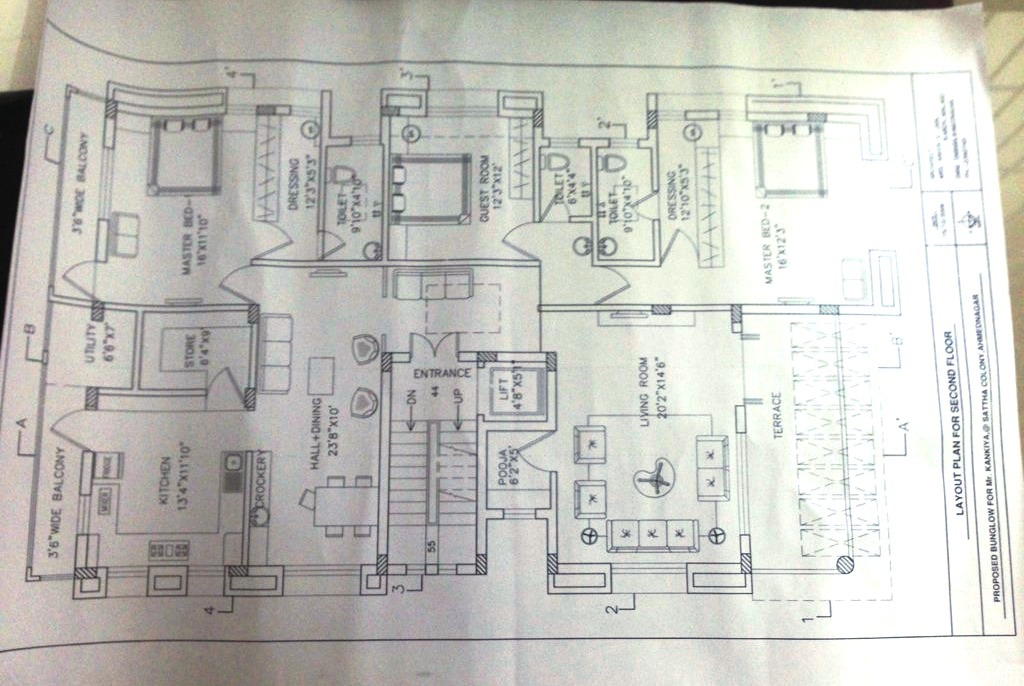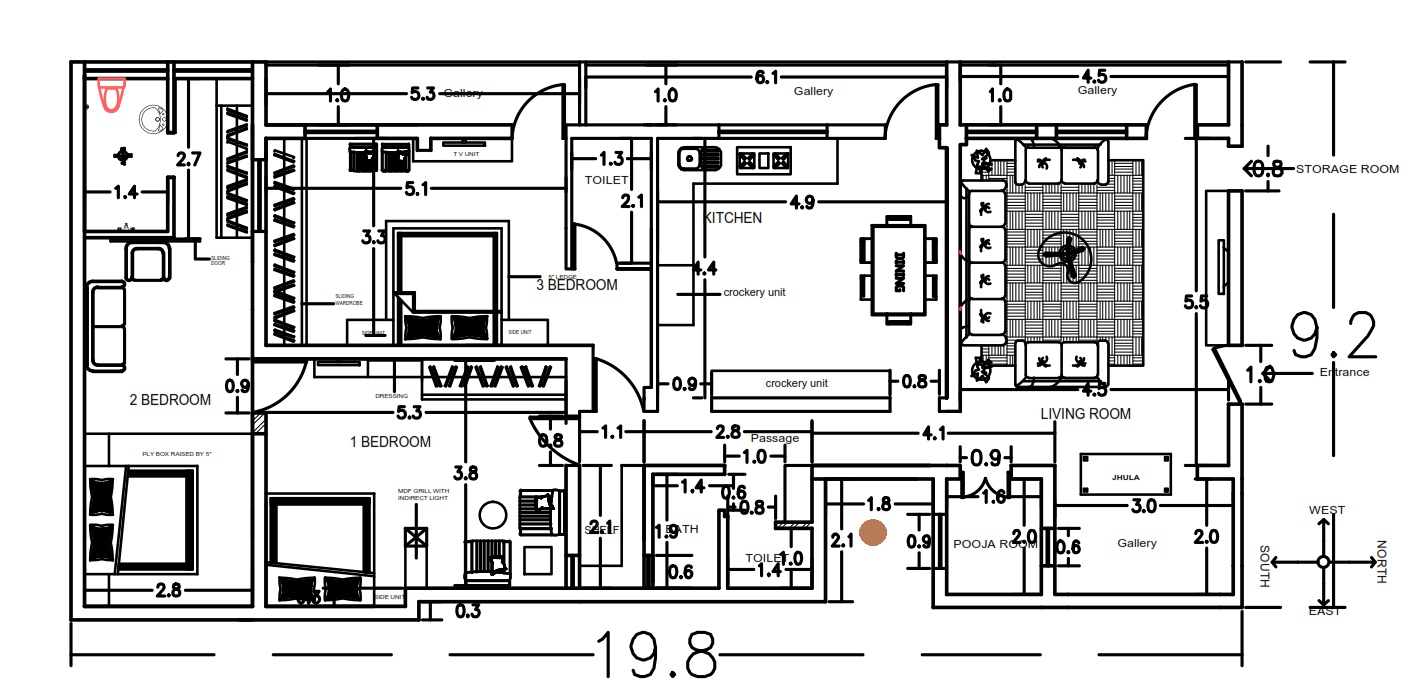blr_p
Quasar
So here is what it looks likeI have tested them with Wifi Analyzer and here's the link for CSV files in Zip format which you all can emulate with wifi analyzer.
**Sorry for inconvenience.**
https://drive.google.com/file/d/0B6gKZT-Z1a4qcHNVSUhxS1R3M0E/view?usp=sharing
I had placed the router in the ground floor kitchen atop crockery.
Experts please analyze.
I
1. ground floor
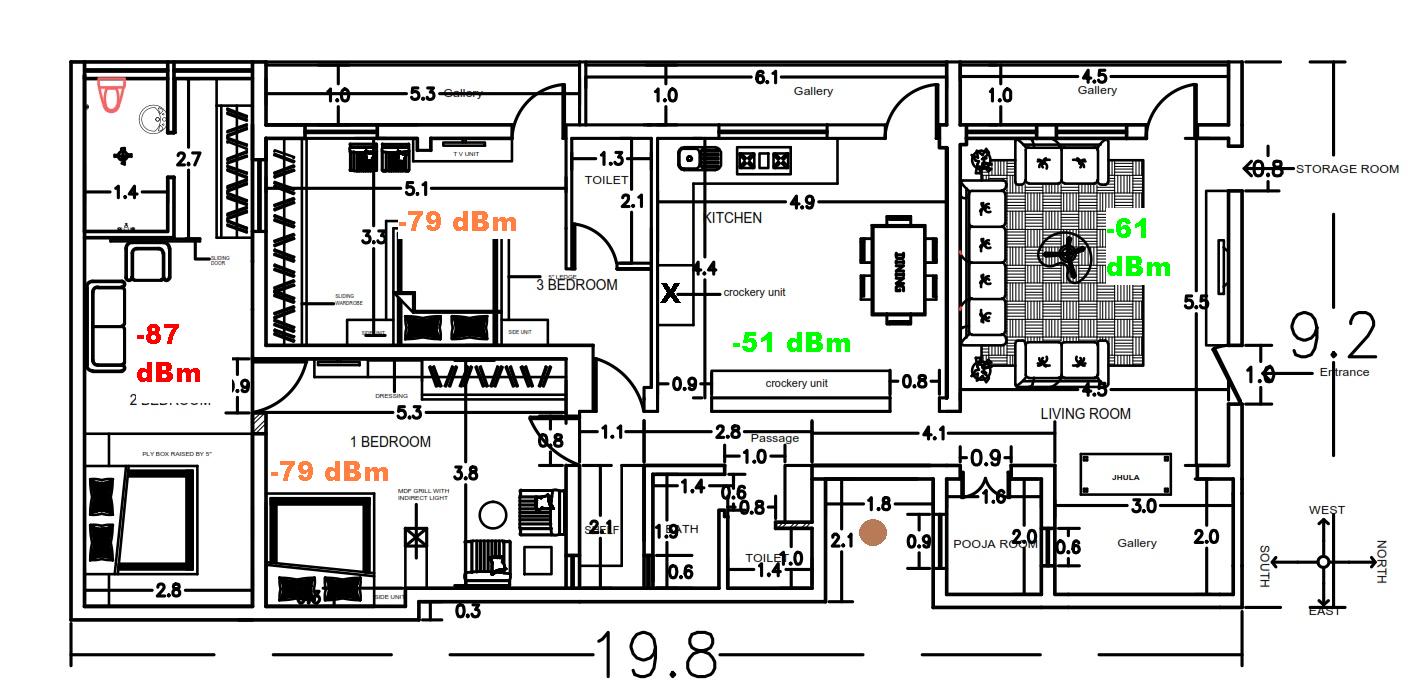
X marks the spot where the router is placed for the test.
Bedrooms 1 & 3 are at the limit here, -79dBm isn't very good, should be closer to 70.
3db is a doubling of power so to get from -79 to -70 requires a signal 8 times more powerful than your present. Sticking 9dBi antennas on your present router will only get you four times more power.
this will bring bedroom 2 into the late 70's. if you are happy with performance currently in bedroom 1 & 3 then you can expect the same with bedroom 2.
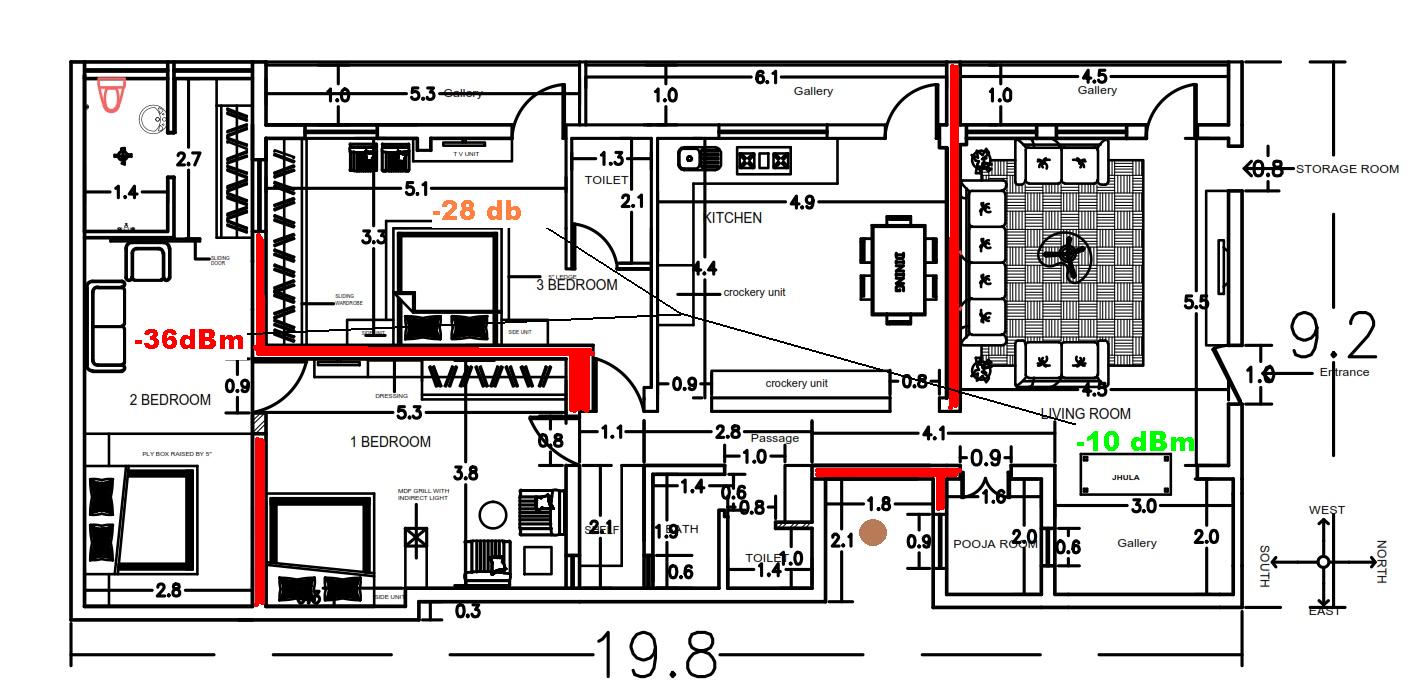
What i don't understand is why less signal is lost in the living room with a load bearing wall (shown in red) than in bedroom 3 ?
And the loss in bedroom 3 is the same as bedroom 1 which has another load bearing wall in the way. Signal in bedroom 1 should be weaker than bedroom 3.
2. upper floor
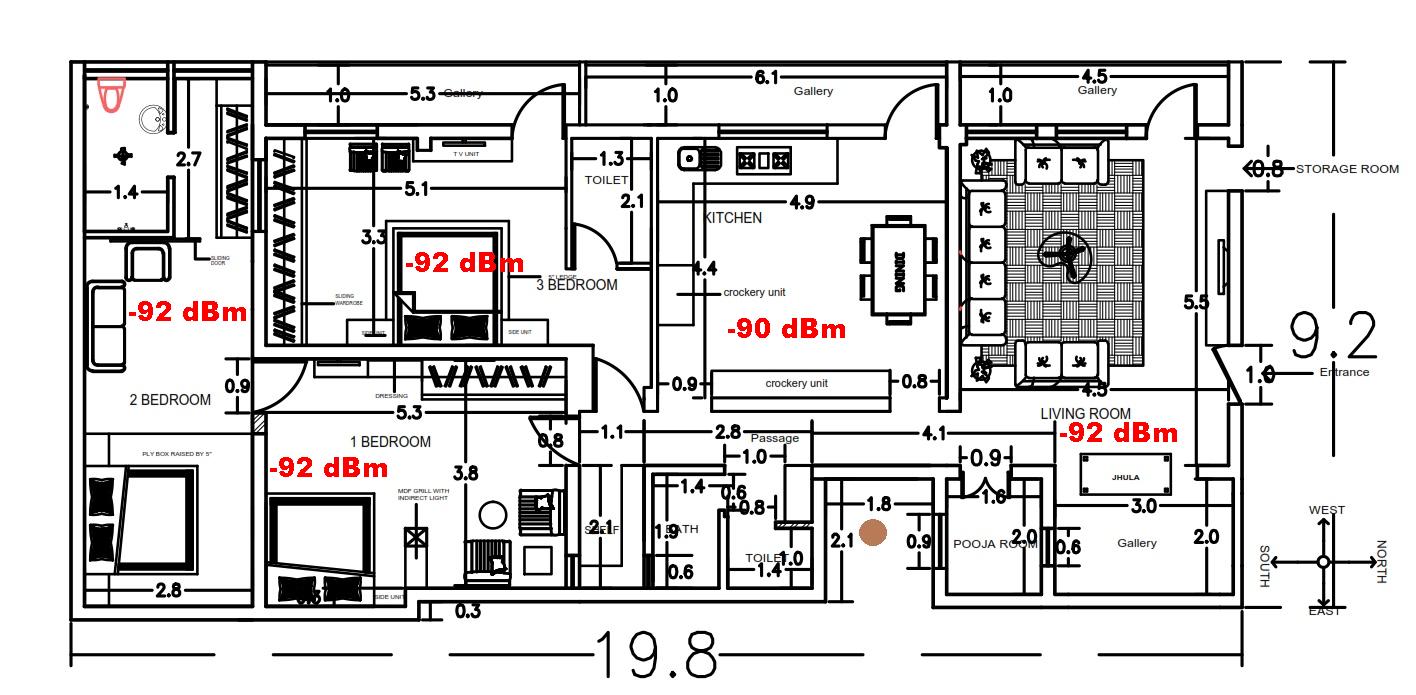
The upper floor is harder to understand. i don't get why in the kitchen there is almost no signal. in your last test it got 86% of pings through so i'd have expected at least -79dbm there if not more still.
How the signal vanishes so completely in bedroom room 3 is a mystery, no signal whatsoever even though its not that far from the crockery unit. Consistent with your first test of 0% ping.
To get these levels up on the top floor is going to take a router with more power WITH high gain antennas (most important) to hear your clients. Read this article.
Why High Power Routers Don't Improve Range
Where is the stairwell located btw, to get to the top floor ?
What gain antennas is microtik shipping with.
Last edited:




